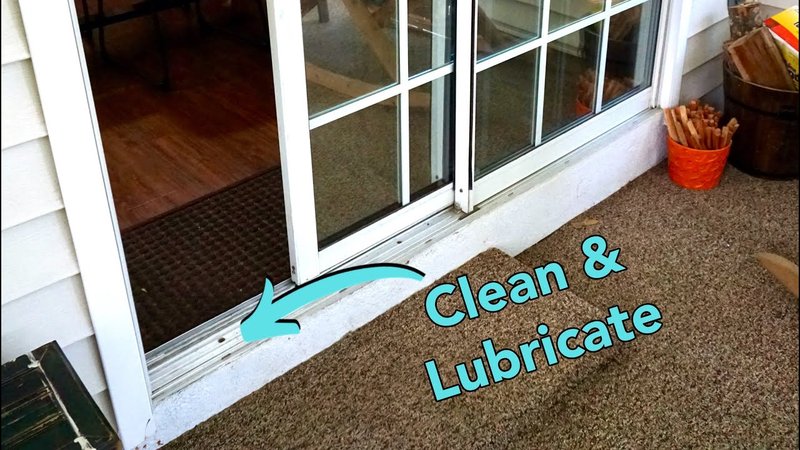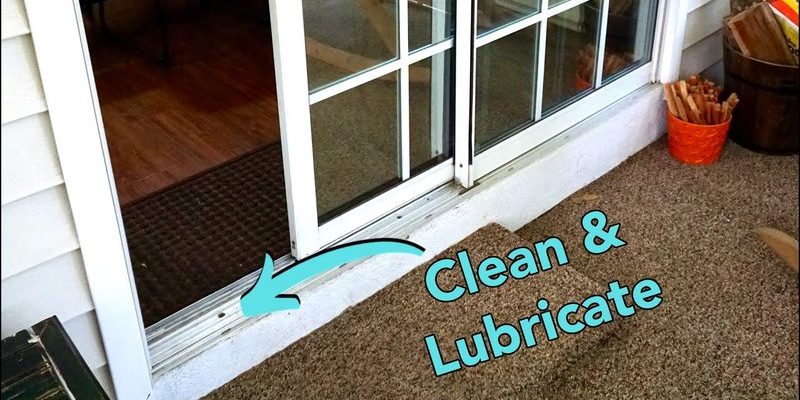
If you’re staring at your Yale, Schlage, or Kwikset lock and wondering why it feels gummy, you’re not alone. Over time, lubricants—especially the thick, goopy kind—mix with dust, pollen, and that mysterious outdoor grit. This not only looks bad but can mess with your lock’s performance. Thankfully, you don’t need to be a professional locksmith or use fancy tools to bring back that clean, satisfying click.
Why Does Exterior Door Hardware Get So Dirty?
It’s easy to underestimate how much abuse your exterior door hardware takes. Think about all the hands that touch your doorknobs, levers, and locks every week: wet hands, grubby hands, sunscreen-coated hands… you name it. Add in splashes from rain, blown dust, and even the oil you use to keep things moving, and it’s no wonder grime piles up.
Old lubricant plays a big role here. When you spray or dab lubricant onto a lock, it does help things move smoothly—but it also acts like a magnet for dust. Over time, this mixture hardens, turning into sticky gunk that’s tough to remove. If you’re a “set it and forget it” type, the mess will sneak up on you. The result? Hardware that looks dull, performs poorly, and maybe even jams when you need it most.
Let me explain: Leaving this grime in place isn’t just about looks. It can make locks harder to turn and cause remotes or keypads to glitch. Yes, that crusty stuff on your deadbolt can actually mess with the electronics in smart locks or coded keypads. That’s why a good cleaning isn’t just about pride, but peace of mind.
What You’ll Need: Tools And Supplies
Here’s the thing: You don’t need a toolbox that rivals a mechanic’s. Most of what you need to clean old lubricant and grime off exterior door hardware is probably sitting in your kitchen or under the sink.
- Soft cloths or rags: Old t-shirts work great.
- Warm water and mild dish soap: Skip harsh chemicals, especially on fancy finishes.
- Toothbrush or small scrub brush: For getting into little crevices.
- Q-tips or cotton swabs: Perfect for detailing.
- Plastic scraper or old gift card: For stubborn buildup—never use metal.
- Rubbing alcohol or white vinegar: Tackles residue without wrecking most surfaces.
- Lubricant: Only use recommended lock lubricant (like graphite powder or silicone spray), not WD-40.
- Optional: Screwdriver, if you want to remove hardware for deeper cleaning.
Honestly, resist the urge to grab steel wool or abrasive pads. Those might feel satisfying, but they’ll scratch and dull your hardware faster than you can say “regret.” Always start gentle and only escalate if you have to.
How To Remove Old Lubricant And Grime: Step-By-Step
Tackling grimy exterior door hardware is one of those chores that looks worse than it is. If you take it step by step, you’ll have everything shining in under an hour. Here’s how to clean off years of old lubricant and stubborn grime:
- Wipe Down Surface: Soak a cloth in warm, soapy water and wring it out. Wipe the hardware to remove loose dirt, pollen, or cobwebs.
- Scrub Gently: Dip your toothbrush in the soapy water. Scrub around the base, under the handle, and in grooves—these spots trap the most grime. Use Q-tips for tight spaces.
- Deal With Buildup: For sticky or hardened lubricant, gently scrape it off with a plastic scraper or the edge of an old credit card. If it’s really stubborn, soak a cloth in rubbing alcohol or vinegar and press it on the area for a minute before trying again.
- Rinse And Dry: Wipe the hardware with a clean, damp cloth to remove soap and residue. Dry thoroughly to prevent water spots.
- Polish (Optional): If your hardware is brass or chrome (and not lacquered), you can polish with a tiny bit of brass polish or a mix of baking soda and water. Always spot-test first!
- Re-lubricate (If Needed): Once everything is dry, apply a tiny amount of recommended lubricant to the moving parts. Avoid spraying everywhere—just a drop helps, and wipe off any drips.
The trick is patience—go slow and let the cleaner do the work. Rushing can scratch or damage the finish.
Should You Remove The Hardware First?
You might be wondering if it’s better to take the hardware off the door before cleaning. Here’s my honest take: For basic surface grime or light buildup, cleaning in place is usually enough. Most people don’t want to fuss with screwdrivers or worry about resetting a lock’s code afterward.
But if your lock is seriously gunked up—think years of caked-on grease, or a deadbolt that’s stiff even after cleaning—it can help to remove the hardware. Here’s why:
- You’ll reach all sides and hidden spots.
- You can clean out the mechanism itself (where old lubricant hides).
- No risk of dripping water or cleaner into your door jamb or electronics.
Just be sure to take photos before you start, especially if it’s a smart lock or coded keypad. That way, you’ll remember how everything fits together, and you won’t have to reset or sync the remote after reinstalling.
What To Avoid When Cleaning Door Hardware
There’s a world of well-meaning cleaning advice online, but a lot of it can actually ruin your hardware. Here’s what *not* to do:
- Don’t use WD-40 as a cleaner: It seems like a simple fix, but WD-40 leaves residue that attracts more grime. For modern door locks, always use a graphite or silicone-based lubricant.
- No bleach or harsh chemicals: Cleaners with ammonia, bleach, or strong acids damage metal finishes and can corrode internal parts.
- Never submerge smart locks or keypads: Water and electronics are mortal enemies. Always clean these with a lightly dampened cloth and keep liquids away from battery compartments or circuit areas.
- Don’t force anything: If a part won’t budge, don’t twist harder—grime inside the lock could be the problem, and forcing it can damage the mechanism for good.
Honestly, following the “gentle is better” rule will save you a lot of headaches. When in doubt, less is more.
Lubricating Your Hardware After Cleaning
Once your exterior door hardware is clean and dry, it’s smart to add a little lubrication—but only to the right places and with the right stuff. Old lubricants are what attract grime in the first place, so you want to avoid repeating the cycle.
If your lock has a keyhole, use a graphite powder lubricant. It doesn’t leave sticky residue and keeps everything slipping smoothly. For hinges or moving parts, a few drops of silicone-based lubricant work wonders. Avoid oil-based sprays—they’re notorious for attracting dust and turning sticky after a month or two.
Here’s an easy step-by-step:
- Shake or tap graphite powder into the keyhole, then insert and turn the key a few times.
- Spray or dab silicone lubricant onto hinges or metal surfaces where parts rub together.
- Wipe off any excess to keep everything looking sharp.
Proper lubrication is like coffee for your door hardware—just enough wakes things up, but too much leaves a mess later.
How Often Should You Clean Exterior Door Hardware?
You might be asking, “How often does this really need to happen?” The answer depends on your climate, how many people come and go, and the type of hardware you have. In most cases, a deep clean two or three times a year is plenty for residential doors. If you notice grime or stickiness sooner, a quick wipe-down never hurts.
For families with kids (who love sticky fingers), or in areas with lots of pollen or construction dust, bump up the frequency. If you have a keypad or smart lock, check for software updates or battery swaps while you’re at it—sometimes, regular cleaning is the perfect excuse to sync or reset your remote controls, too.
When To Replace Versus Clean
Sometimes, no matter how much elbow grease you use, old lubricant and grime just won’t budge. Maybe your deadbolt feels grainy, the handle is pitted, or the finish is completely worn. Here’s when it makes sense to stop cleaning and start shopping:
- The hardware still sticks or jams after cleaning and lubricating.
- The finish is worn down to the bare metal, or you see rust spots.
- Electronic locks glitch even with fresh batteries and a clean keypad.
Replacing hardware isn’t as scary as it sounds, especially with universal-fit locks available. Just remember, switching brands (like from Schlage to Kwikset) may mean resetting or pairing new remotes, so check compatibility first.
Sometimes, a fresh start is the cleanest solution of all.
Wrap-Up: Keeping Door Hardware Clean And Functional
Cleaning old lubricant and grime from exterior door hardware isn’t glamorous, but it makes a bigger difference than you might think. A sparkling doorknob feels better in your hand, and a well-lubricated lock turns with a satisfying click instead of a grunt. Whether you’ve got a trusty Yale deadbolt, a modern Kwikset smart lock, or a classic Schlage handle, the trick is regular, gentle care.
Take it slow, use the right tools, and keep up the habit a couple times a year. Your doors will glide open, your hardware will shine, and you’ll avoid all those frustrating moments when you’re jiggling a key or punching in a code for the tenth time because grime got in the way. In the end, a little attention goes a long way—keeping your home safe, stylish, and totally grime-free.
